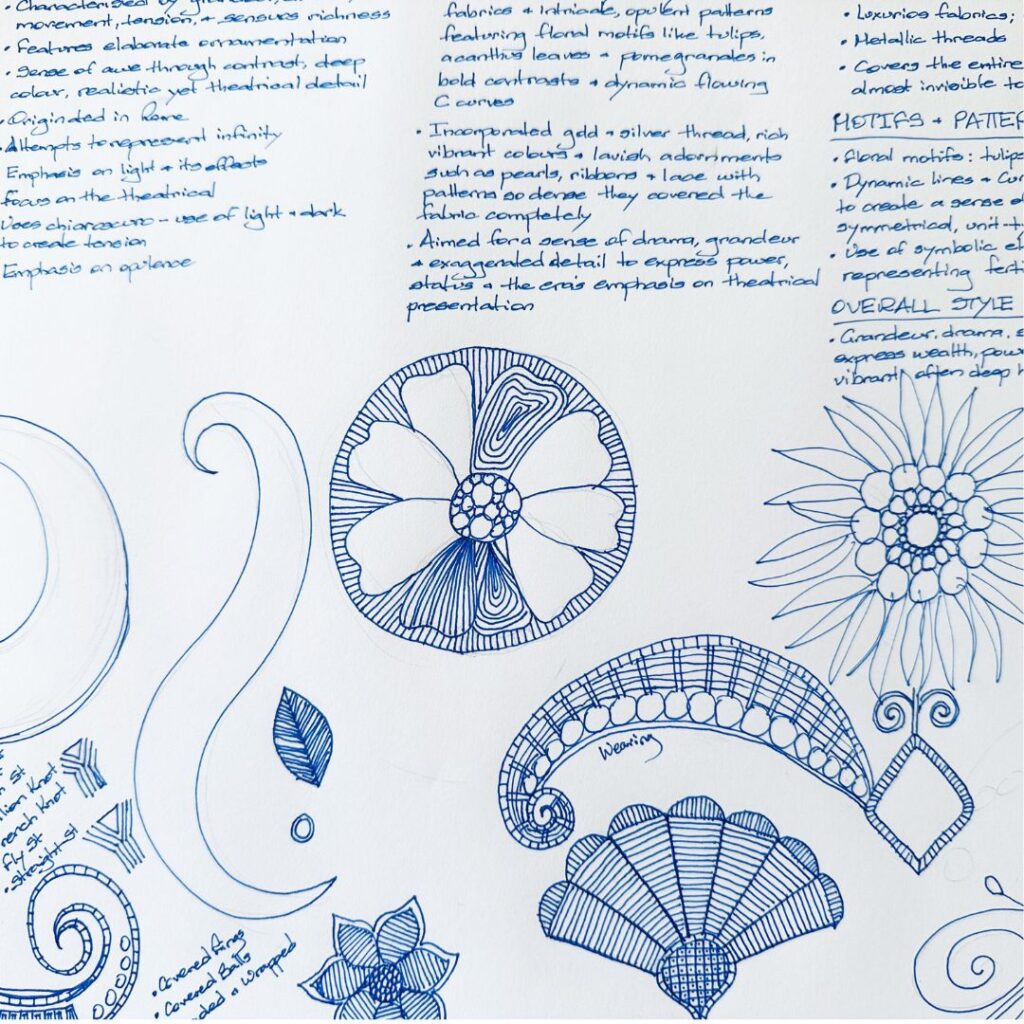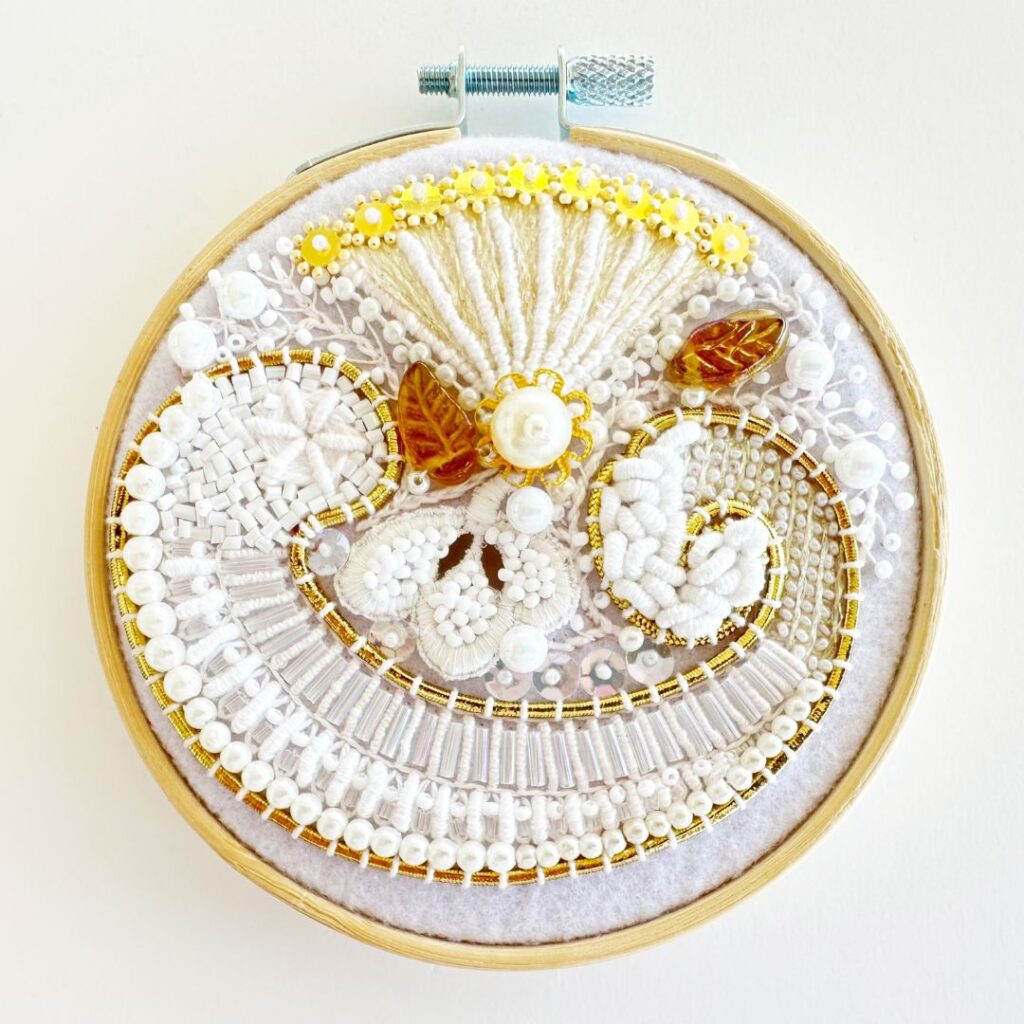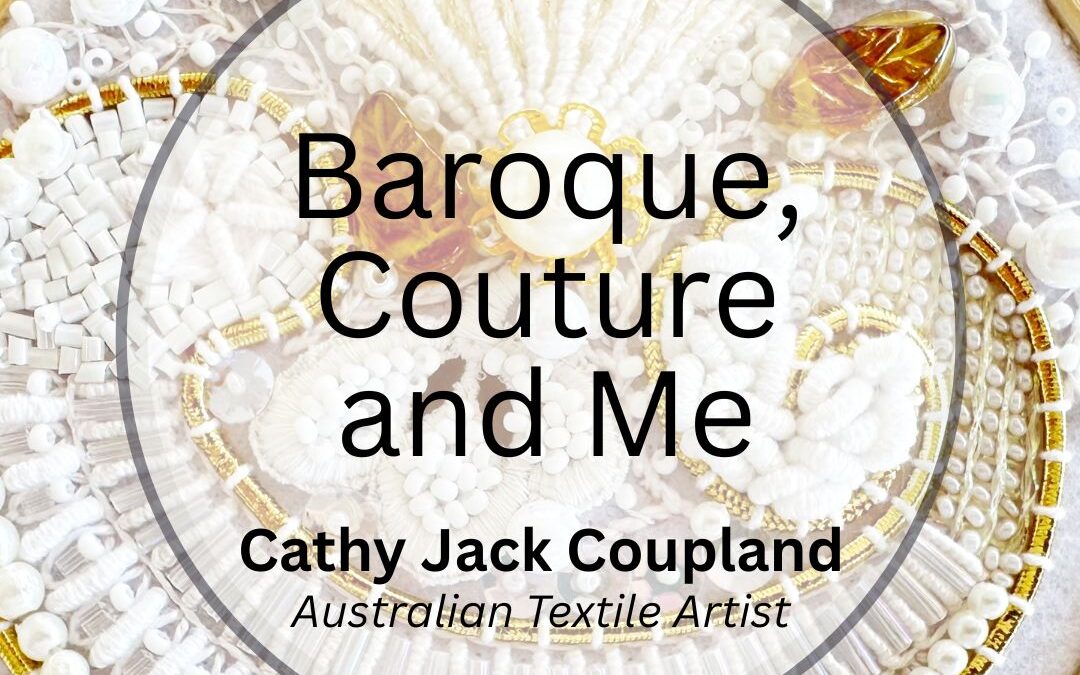A new opportunity arises that spurs me to sit down and rethink a few things, and the whiff of new inspiration and fresh ideas prompts an immediate beginning, which is exactly what I did.
The theme celebrates the artistry and cultural significance of embroidery, allowing for the exploration of both traditional techniques and contemporary interpretations. Fantastic.
That sits right within my wheelhouse, but where I become unstuck is where the work should also explore how I see my role, identity or experiences within my community or society. That’s where I fall flat.
How on earth can I make those two concepts work together?
Moving on…I do have an idea, one that’s been evolving over the last couple of days.
I adore the design styles of both the Baroque and Rococo eras.
Baroque is the more serious style that emphasises grandeur and emotional intensity. Rococo is the lighter, more playful and elegant style that evolved from Baroque itself.
Baroque loves the drama of rich, darker tones with dramatic contrasts between light and dark. Rococo loves pastels and is all sweetness and light.
Baroque is extravagant and heavy, often symmetrical and formal. Rococo is asymmetrical and fluid, working with delicate scrollwork, curves and intricate patterns.
So there’s the beginning of an absolutely delicious design journey into a Baroque/Rococo-inspired design alone.
But I also love the Haute Couture era. This is where craftsmanship, exquisite detail, luxurious fabrics and embellishments come together to create something beautifully unique.
And surprisingly, some couture work has elements of that wonderfully ornate, over-the-top Baroque style.
Now, finally, I need to bring the work up to date with some Contemporary embroidery. With this, I could use thick threads, bold stitches, leave some threads hanging and perhaps work with some unusual and recycled materials. Paper and plastic come to mind, but this is very early stages, so who knows?
So, where do I begin?
Research. This is where words and knowledge come together to help formulate ideas, motifs and display options, but more than that, it educates me to make more informed decisions.
When I’m working on this sort of project, I like to make notes, draw quick sketches and begin a Pinterest board of ideas related to this project alone.

Insofar as Baroque, Couture and Contemporary embroidery are concerned, I ask questions such as where they originated, how they evolved, and what their characteristics are. The answers help build a solid base from which I can begin.
I investigate how embroidery was used in those eras, including the materials and techniques employed, the prevailing motifs and patterns, and the overall style.
And I’m inspired to sample.

This all comes together to inform not just the physical design, but also stitch selection and the approach I should take to stitching. Things like whether stitches were used on their own, combined, or even layered to achieve certain effects.
Even my colour choices can add another layer to bring emotion, depth and character to the work. It helps set the mood, offers contrast along with the element of storytelling – but it also helps me communicate with the viewer, making the embroidery more engaging.
Then I come down to how I tell the story of three such diversely different eras and styles, and how I bring them together cohesively and harmoniously?
Ideas are swirling at the moment, but are too ephemeral to write about here. Once they consolidate, I’ll be more than happy to share them with you.
I hope you’ll join me and be inspired to create your own embroideries inspired by historical eras and embroidery styles, because I believe history is the best place to start. It’s endlessly inspiring for me and is something I delve into regularly for my Stitch Safari Podcast.
Back to some more research and quick sketching while those ideas are top of mind.


